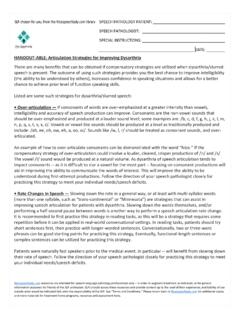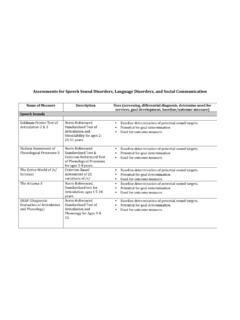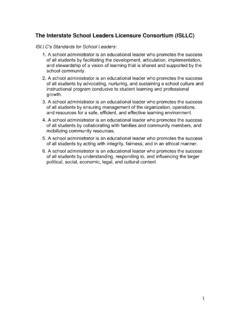Transcription of Purpose and scope of this document - Centers for Disease ...
1 CDC s Division of STD Prevention STD Outbreak Response Plan GuideDecember 2020 Purpose and scope of this document The Purpose of this document is to provide an outline, considerations, and/or starting point for jurisdictions to develop their own STD outbreak response plan. this guidance is not meant to be prescriptive, but rather is meant to (1) highlight content areas and considerations that jurisdictions might choose to address in local plans and (2) spur discussions within health departments as response plans are bring crafted. this is a guide to be modified as necessary to meet the needs of each jurisdiction. this guide can inform discussion throughout the health department as part of developing an outbreak response plan. STD program managers should not expect to develop or manage each section but are encouraged to identify the stakeholders to be responsible for each section. Programs should review and update their outbreak response plans annually to ensure it remains current and in alignment with health department processes and evolving scientific knowledge.
2 We recognize that STD programs are currently strained, as many areas have been seeing increases in sexually transmitted diseases in recent years, as well as other competing public health priorities. With these increases there have been questions and concerns about what constitutes an STD outbreak. In general, an outbreak is defined as an increase of Disease among a specific population in a geographic area during a specific period of time. However, specific definitions for STD outbreaks are relative to the local context. For example, a small increase in congenital syphilis morbidity in an area without recent reported cases requires critical action, although it may not qualify as an outbreak based on statistical tests. While the larger increase in STDs still requires resources and programmatic attention (and possible changes in approach or prioritization), this document is meant to address more defined increases that require a more focused and urgent response.
3 The focus of this document is on the investigation aspect 2 of the response. The types of situations this document addresses include individual cases and/or cl usters of: Organisms with clinically significantresistance ( , gonorrhea that isunsuccessfully treated withrecommended therapy). Organisms not previously or recentlydetected in the jurisdiction ( , LGV,chancroid). New/rare clinical presentations ofdiseases ( , ocular syphilis). New populations or subgroups affected( , syphilis among females, amongattendees of a school) New geographic areas ( , syphilis on aNative American reservation that has notseen syphilis in many years). Any other distinguishing characteristicrelated to cases in a cluster. 3 Outline for Outbreak Response Plan 1. Objectives 2. Outbreak Preparedness a. Activation of the outbreak plan b. Roles and responsibilities c. Additional staffing and resource capacity d. Data security e.
4 Communication plan f. Identify partnerships and collaborations 3. Considerations for Managing a Response a. Management structure b. Informing, coordinating, and engaging with partners c. Prioritization of Disease 4. Outbreak Investigation and Response a. Determine the existence of an outbreak b. Verify the diagnoses c. Establish a case definition and find cases d. Describe the data in terms of person, place, and time e. Determine who is at risk of becoming ill f. Data analysis and study design g. Implement prevention and control measures h. Summarize findings and evaluate response 5. Considerations for Recovery Phase 6. Appendices 4 Objectives An initial step in development of an outbreak response plan is articulation of the objectives of a public health response to the local identification of a Sexually Transmitted Disease (STD) outbreak. Clear articulation of the objectives of a response may inform the scope and activities included in the response plan.
5 Possible objectives of a response include: Understanding why there are new increases in a particular STD Identifying opportunities for intervention and prevention of future outbreaks Establishing new partnerships with local clinical and community partners, as well as others within the health agency, to help improve health Limiting transmission within a community through rapid evaluation and effective treatment of partners 5 Outbreak Preparedness There are many actions STD programs can take ahead of time to prepare for an outbreak including determining the baseline level of Disease and when the outbreak plan should be activated, establishing what roles are needed and who will be responsible for those roles, development of systems, capabilities, partnerships, or materials that may be utilized during an outbreak, and practicing an outbreak response. In this section, consider what you can do to prepare your program for a potential future STD outbreak.
6 Activation of the outbreak response plan A program is responsible for determining the local threshold level of various STDs or circumstances that will trigger an activation of a response plan. These thresholds might not be based solely on surveillance data but could include concerning reports from DIS or clinical providers. In general, an outbreak can be defined as occurring whenever Disease levels exceed what is expected in a given community. The community can be defined as small as a facility or establishment, census tract, neighborhood, city, county, region, or population defined by any number of sociodemographic characteristics ( , adolescents, persons who inject drugs). Unfortunately there are no magic numbers that can be applied in all situations for determining an outbreak; threshold levels need to be defined and determined based on local epidemiology (see CSTE Syphilis Outbreak Detection Guidance).
7 What are the specific scenarios or thresholds when your jurisdiction will activate the outbreak investigation and response plan? At what frequency will data be reviewed to determine if an outbreak is occurring? Who is responsible for performing and reviewing these data analyses? What are the data systems to be used to identify the outbreak and to capture response efforts? Who is responsible for determining that an outbreak is occurring and if and what type of response structure to mobilize? Leading a response? Who in your organization needs to be notified of an outbreak? What are the specific jurisdictional responsibilities that can be determined in advance? 6 Under what circumstances would you use an incident command structure to respond to an STD outbreak? Roles and responsibilities As part of the development of a response plan, STD programs are encouraged to identify the person(s) responsible for determining whether an outbreak is occurring (has occurred).
8 Programs are also encouraged to consider (1) the roles and responsibilities needed during an outbreak, (2) the job categories or specific persons that will fulfill the responsibilities of the roles, and (3) the management structure within which the outbreak response will operate. The below list outlines possible roles and responsibilities that a program may wish to utilize during the course of an outbreak response and to define within an outbreak response plan. this list is not exhaustive, consider any additional roles necessary to effectively respond to an outbreak. As appropriate, individual persons may serve in multiple roles. Programs may opt to develop a phased approach, in which certain roles are activated initially and other roles are subsequently activated as needed, such as if an outbreak expands or becomes more complex. Additionally, an escalation of the response may necessitate that individuals shift roles: individual team members may be able to serve in multiple roles during a simple outbreak response, but may need to focus on a single role as an outbreak response increases in complexity.
9 If using this phased approach, programs are encouraged to define the scenarios that would trigger activation of additional team members and roles. Flexibility is critical. Specific roles that should be considered include: Leadership, management, and oversight of outbreak activities Surveillance activities Epidemiologic activities and investigation Data management and security Patient investigation, contact investigation, and partner services Laboratory specimen collection, transport, and testing oversight Clinical management of infected person and partners Control and prevention measures Risk communication and media liaison Coordination with external partners and agencies 7 Outreach and guidance to and education of community healthcare providers Outreach to and communication with affected communities Support activities such as logistics and budgetary management Programs are encouraged to specifically define the response structure, key roles and responsibilities, and identify specific staff or positions to fill those key roles while developing their response plan.
10 Helpful Hint: During an outbreak response it is important for people to be flexible; however, you don t want to pull staff in so many directions that nothing is accomplished. Additional staffing and resource capacity During an outbreak response there may be a need for additional case investigation, data entry, epidemiologic analyses, and laboratory staff, as well as the need for staff that can implement outbreak specific responsibilities. For example, DIS are essential for contact tracing investigations and partner services, but DIS capacity within the jurisdiction can be quickly overrun during a large outbreak or multiple competing responses. STD programs may choose to determine the capacity of its DIS staff, clinical, and laboratory services before an outbreak occurs and to estimate at what point during an outbreak might the needs of the response exceed the capacity of existing staff. Additionally, programs may define how the daily responsibilities of those assigned to support the outbreak response will be re-defined or re-distributed to others that are not part of the response.

















